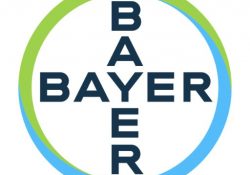The National Foreign Trade Council (NFTC) submission (7 February 2014, USTR-2013-0040) to USTR’s 2014 Special 301 Review requested USTR to designate India as a Priority Foreign Country and “conduct an out-of-cycle review of India to assess” Indian policies “across sectors,… Continue Reading →
The National Association of Manufacturers’s (NAM) submission (7 February 2014, USTR-2013-0040) to USTR’s 2014 Special 301 Review requests that USTR designate India as a Priority Foreign Country citing concerns with India’s actions in multilateral fora including the UNFCCC, WTO and… Continue Reading →
The Intellectual Property Owners Association’s (IPO) submission (7 February 2014, USTR-2013-0040) to USTR’s 2014 Special 301 Review expressed concern over various aspects of India’s policies including “India’s Forced Technology Transfer, Compulsory Licensing, and Lack of Effective IP Protection” and “Third… Continue Reading →
The Biotechnology Industry Organization (BIO) submission (7 February 2014, USTR-2013-0040) to USTR’s 2014 Special 301 Review requested USTR to designate India a Priority Foreign Country. BIO expressed concerns over the robust use of patent oppositions in India: The Indian generic… Continue Reading →
National Association of Manufacturers (NAM)
Continue Reading →
PhRMA
Link to submissions here.
Canada
Canadian judiciary has created a heightened standard for patentable utility.
Continue Reading →
On January 21, 2014, Ketaki Gokhale of Bloomberg published a story in Businessweek on disputes over drug patents. The story closed with a rather sinister quote attributed to Bayer CEO Marijn Dekkers, “We did not develop this medicine for Indians. Continue Reading →
According to a press release issued by the World Intellectual Property Organization (WIPO) on 6 December 2013, four candidatures for the post of Director General were received before the deadline for nominations (5 PM, 6 December 2013) expired.
The WIPO press release noted that,
The candidates are (in alphabetical order of names of candidates): Mr. Francis Gurry (Australia), Mr. Geoffrey Onyeama (Nigeria), Mr. Jüri Seilenthal (Estonia), and Mr. Alfredo Suescum (Panama).
Continue Reading →
On Friday, 31 January 2014 (6:30 PM Geneva time) the WIPO Standing Committee on the Law of Patents (SCP) resumed in plenary mode to discuss the facilitator’s text (Mr. Victor Portelli, Australia) on the future work of this committee including activities on 1) Exceptions and Limitations to Patent Rights, 2) Quality of Patents, including Opposition Systems, 3) Patents and Health, 4 Confidentiality of communications between clients and their patent advisors and 5) Transfer of Technology.
Continue Reading →
